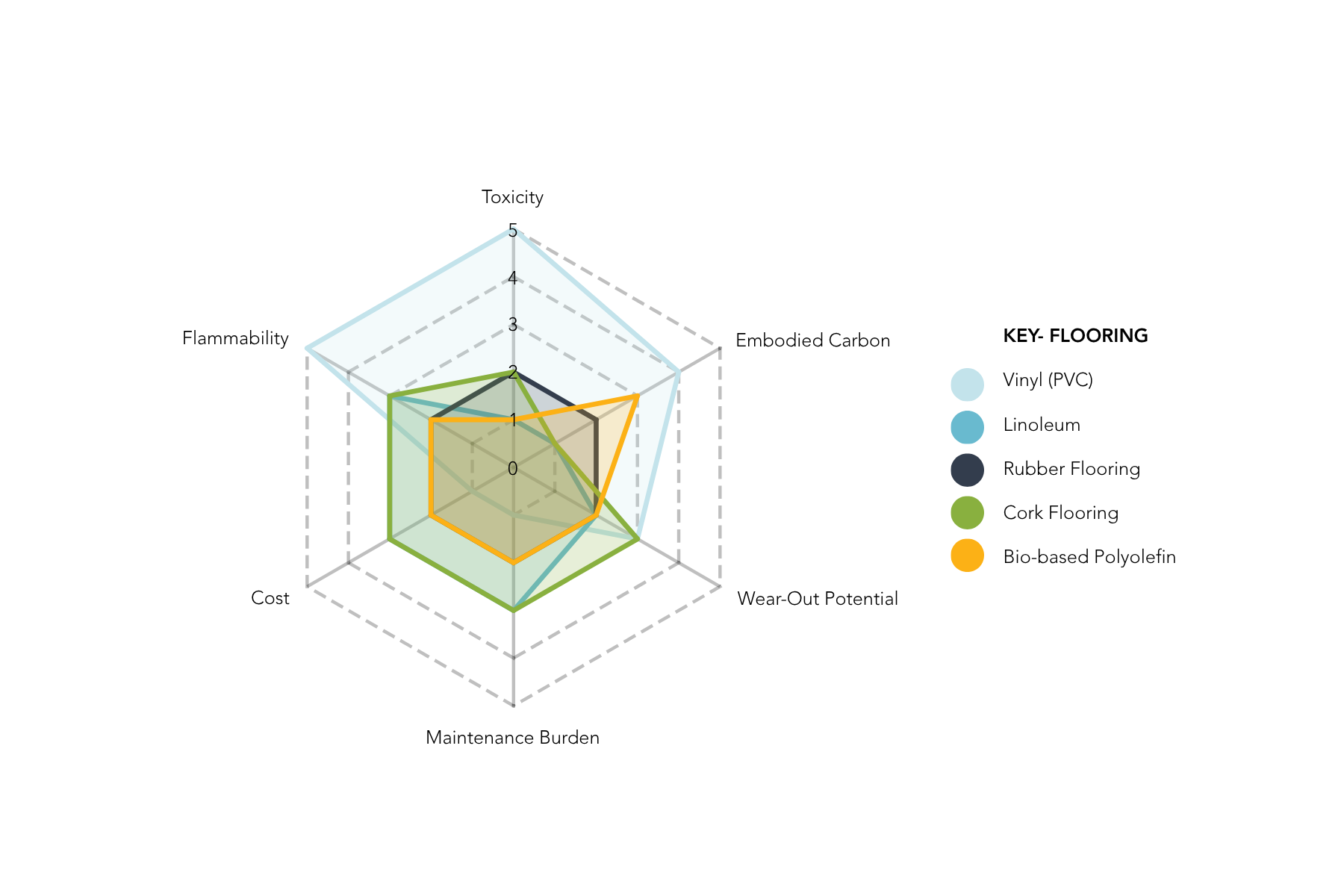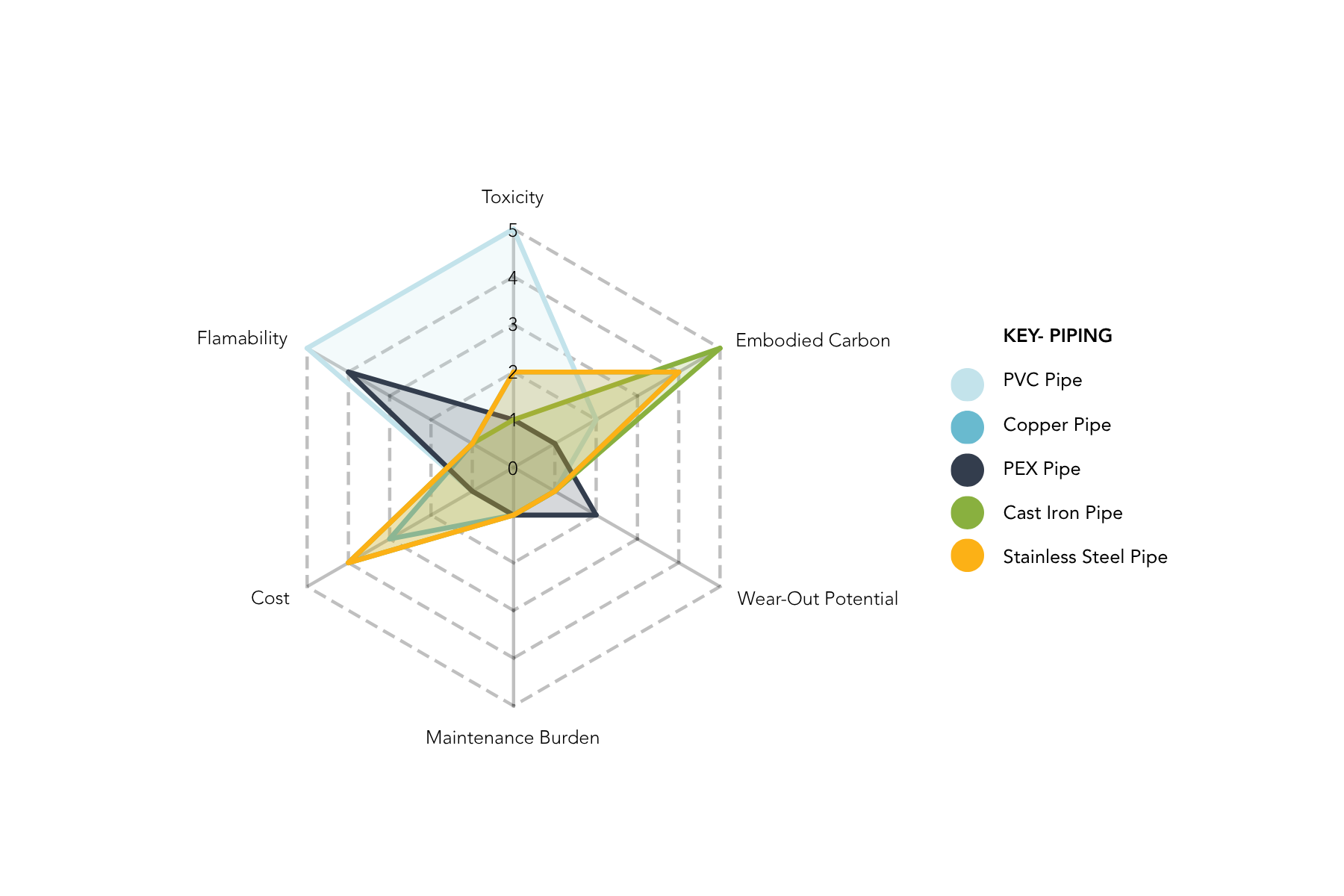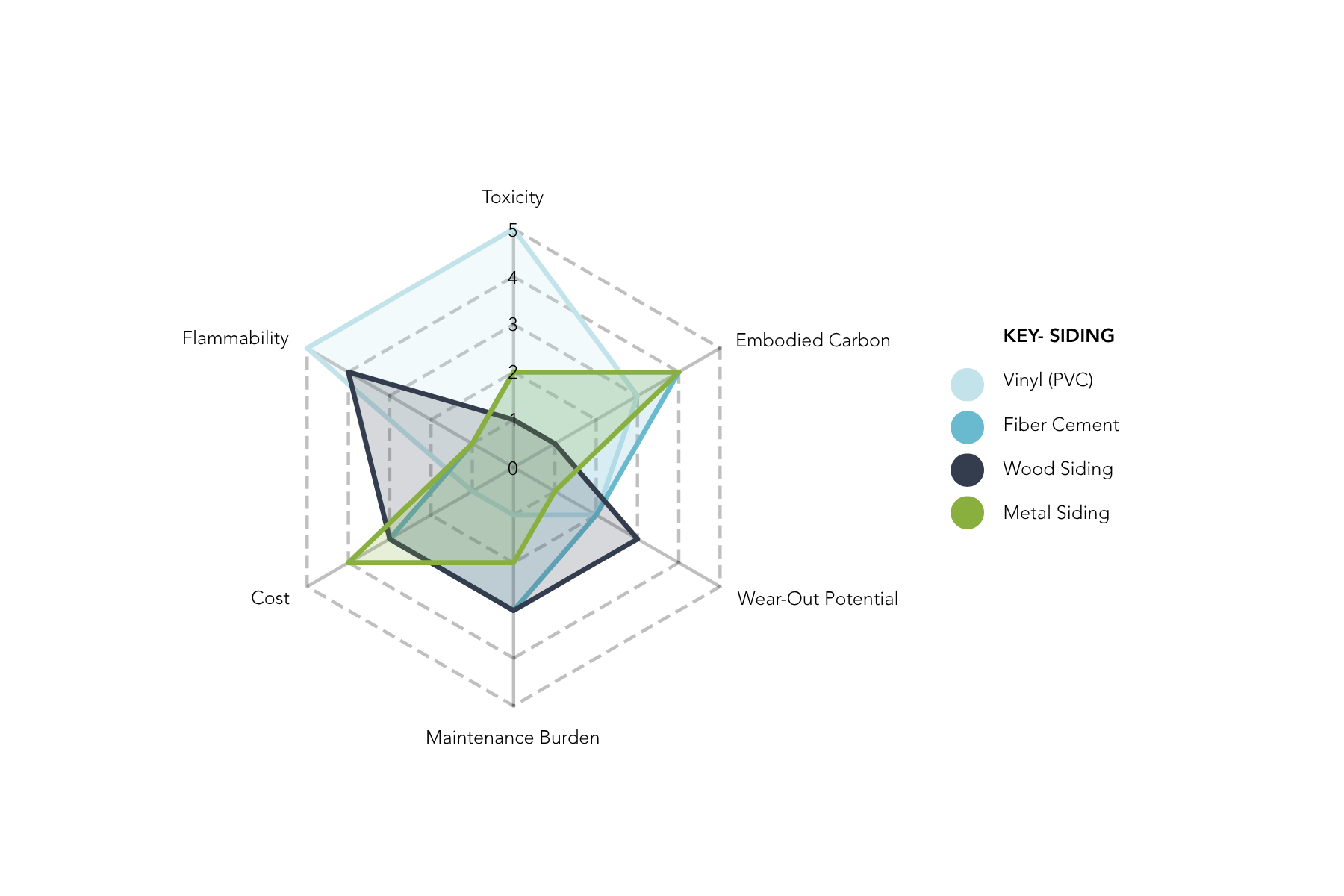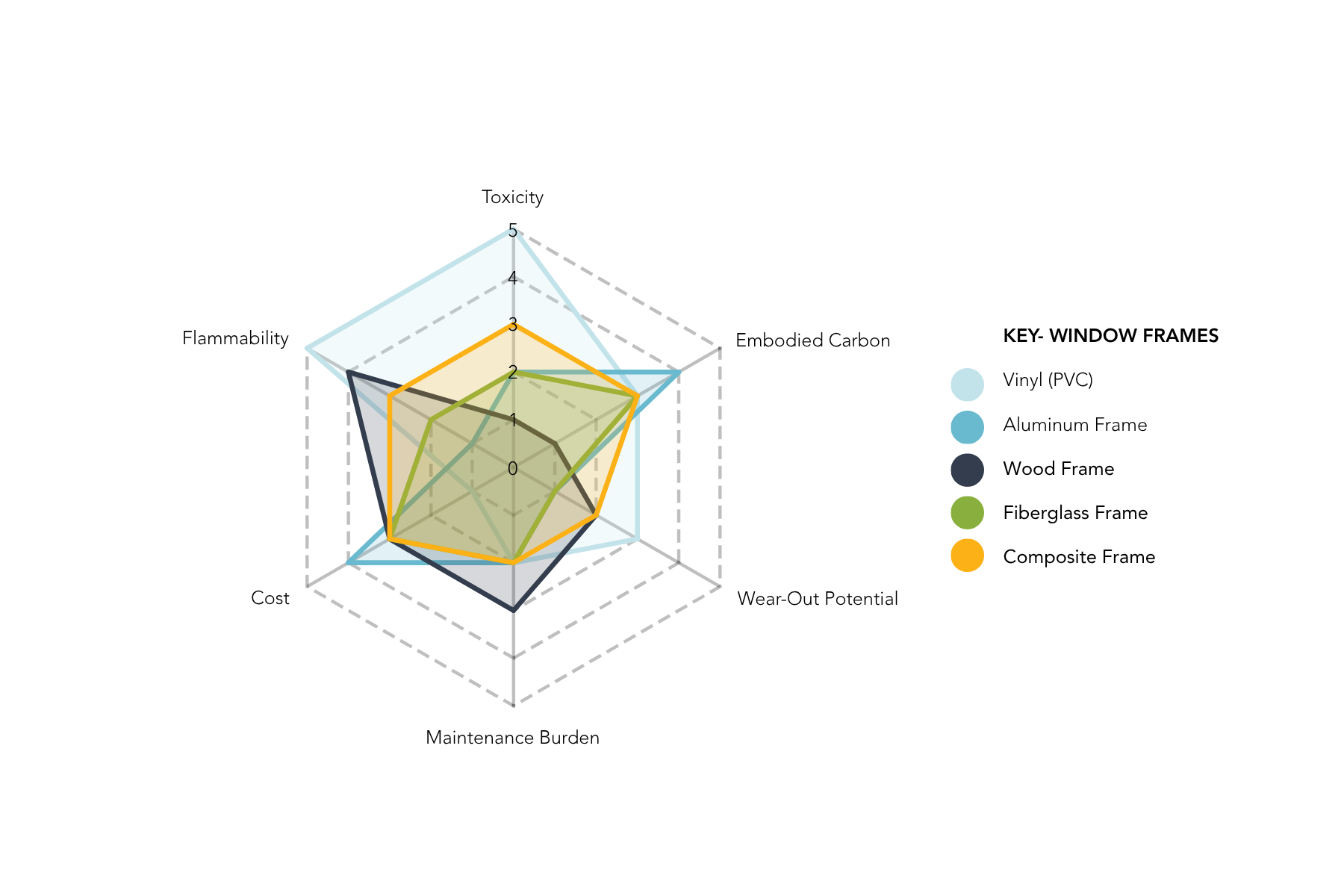Rethinking the applications of PVC in the Built Environment
The history of building materials is marked by moments of realization—when products once considered essential are later revealed to carry significant long-term costs.

Surabhi Khanderia
Senior Design Manager

Katie Freeze-Becker
LEED AP, WELL AP, Fitwel Ambassador
Asbestos, lead paint, and formaldehyde are well-known examples. Today, a growing body of research suggests that polyvinyl chloride (PVC) may be next in line for serious reconsideration.
PVC’s widespread use in piping, flooring, wall protection, and window coverings is no accident. It’s inexpensive, durable, and familiar. Yet over the years, scientists, public health experts, and building professionals have raised concerns about vinyl chloride monomers (a known carcinogen), additives like phthalates, and the release of toxic compounds during fires and disposal. This is not new knowledge. As early as 2007, the U.S. Green Building Council commissioned a thorough evaluation of PVC’s environmental and health impacts, weighing them against alternatives.
The debate around healthy materials—once centered only on interior exposure—is expanding. With the intensifying frequency of climate-related disasters like wildfires, it’s no longer enough to focus on indoor air quality alone. Fires involving PVC-laden materials can release hydrogen chloride, dioxins, and other highly persistent toxicants into the surrounding environment, affecting not just building occupants, but entire communities.
Just like asbestos, lead, and formaldehyde, we’ll eventually look back and wonder why we normalized PVC.




This three-part series aims to turn awareness into action.
- Part I explores why PVC warrants focused attention today.
- Part II outlines practical alternatives across major building systems- siding, windows, piping, flooring, and more, incorporating graphs to summarize the findings and provide an easy visual for comparing materials.
- Part III offers guidance on how to mitigate risk in new construction and existing buildings. We will explore how to leverage the specifications process to benefit new buildings, while examining the potential of thoughtful renovation, fire hardening, and smarter maintenance strategies for buildings that already contain PVC.
